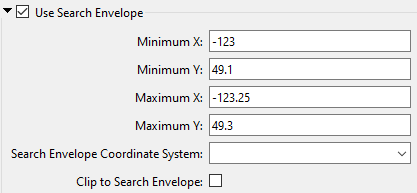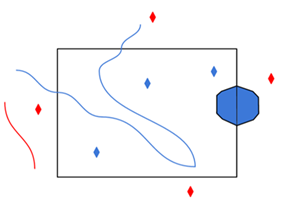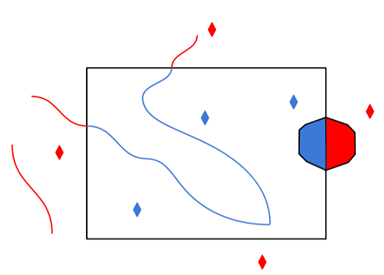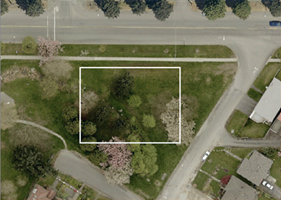Optimization
If the value is Yes, the group name, object name, and smoothing group information will be lost for each face in the source file, and the corresponding FME feature will contain only one mesh that contains all of the faces from the source file. This results in a more efficient representation of the data if the user does not wish to keep the additional face information.
The OBJ writer will maintain this information so it is recommended to leave this option set to "No" for OBJ to OBJ translations. If the value is set to 'No', in the case that multiple group names, object names or smoothing groups are used, this information will be preserved as traits on multiple meshes containing faces that have been grouped by these values.
Coordinate System
Move to World Coordinate System
Yes – The companion dataset files (having the same name as the primary file) are read in order to acquire the coordinate system and the data necessary to convert points to the world coordinate system. If there are no companion files with the same name as the primary file, FME looks in the same folder for files named global.*.
|
A search envelope (also known as a bounding box) is a rectangular area that defines a geographic area. In FME, the easiest way to define a search envelope is to use search envelope parameters. Defining a search envelope is the most efficient method of selecting an area of interest because FME will read only the data that is necessary – it does not have to read an entire dataset. Search Envelope parameters apply to both vector and raster datasets and can be particularly efficient if the source format has a spatial index. Most FME readers have parameters to define the search envelope of data that is being read:
The parameters include the x and y coordinates of the bounding box as well as a parameter that defines the coordinate system. How to Define the Bounding Box Using the minimum and maximum x and y parameters, define a bounding box that will be used to filter the input features. Only features that intersect with the bounding box are returned. Note that the bounding box intersection is not a full geometry intersection (based on spatial relationships) that would be returned by a transformer like the SpatialFilter. Note If all four coordinates of the search envelope are left at 0, the search envelope will be disabled even if this option is checked.
|
|||||||
|
Search Envelope Coordinate System |
Specifies the coordinate system of the search envelope if it is different than the coordinate system of the data. The coordinate system associated with the data to be read must always be set if this parameter is set. If this parameter is set, the minimum and maximum points of the search envelope are reprojected from the Search Envelope Coordinate System to the reader’s coordinate system prior to applying the envelope. |
||||||
|
Clip to Search Envelope |
The underlying function for Use Search Envelope is an intersection; however, when Clip to Search Envelope is checked, a clipping operation is also performed.
|
||||||




